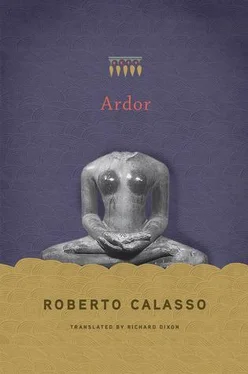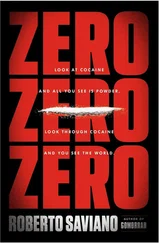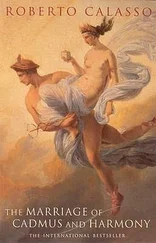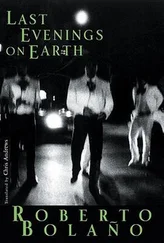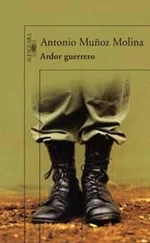Śvetaketu — to whom his father, Uddālaka Āruṇi, had stated a doctrine in three words, three words that have come down through the centuries: “Tat tvam asi,” “This you are”—said to his father one day: “‘I want to be initiated for a one-year rite.’ His father looked at him and said: ‘Do you, you who have a long life, know the shallow banks of the year?’ ‘I know them,’ he replied, for indeed he said this as someone who knows it.”
XVI. THE SACRIFICIAL VISION
As for Numa himself, they say that he confided so much in the divine that one day, while he was celebrating a sacrifice, when told that enemies were approaching, he smiled and said: “And I am sacrificing.”
— Plutarch, Numa, XV, 12
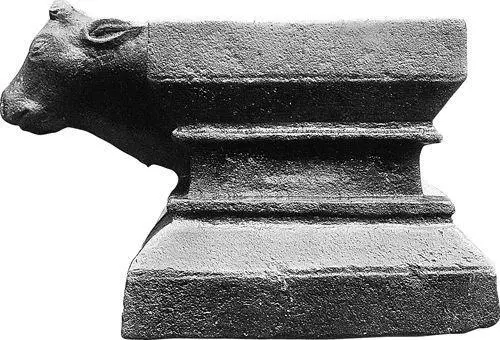
The sacrifice is a journey — linked to a destruction. A journey from a visible place to an invisible place, and back. The point of departure can be anywhere. And also the point of arrival, so long as it is inhabited by the divine. What is destroyed is the energy — an animate or inanimate being — that moves the journey. But it is always considered a living being — an animal or plant or even a liquid that is poured or an edible substance or an object (a ring or a precious stone or something that is perhaps precious only to the sacrificer).
This, in a minimum of words, was the doctrine of the Vedic ritualists, expounded in the Brāhmaṇas in thousands and thousands of words. And it didn’t simply describe the Indian way of practicing sacrifice, comparable with countless others. The sacrifice, like the sexual act, can be practiced in many different ways, but it follows an immutable pattern.
Men are continually changing. Their basic physiology remains the same. If a certain interlinked sequence of gestures is to be carried out, certain ways will be constant. The sacrifice is not like the act of running or breathing or sleeping. But it is a sequence of acts that has a certain resemblance to them. It doesn’t matter that the motives are various and complex. In each case they have to follow certain preexisting tracks.
The Vedic ritualists composed their treatises between the tenth and the sixth centuries B.C.E. Nowhere else was the theory of the sacrifice ever developed, varied, explained with such clarity. All other practices and other descriptions — in Polynesia or Africa, in Greece or Palestine — are just particular instances of what may be found in the labyrinths of the Brāhmaṇas.
One day, in late nineteenth-century Paris, an Indologist — Sylvain Lévi — set out to describe as precisely as possible the sequence of actions that govern the sacrifice according to the Brāhmaṇas. Lévi refrained from expressing his own thoughts on the doctrine, except in a few isolated instances. He was convinced that the scholar had only one duty: accuracy.
Very shortly after, two of his students, Hubert and Mauss, outlined a theory of sacrifice — hence of all sacrifices, in every age and in every place — stating at the outset that they would be following the lines traced out in the Brāhmaṇas and in the Pentateuch (though in fact referring almost exclusively to the Brāhmaṇas). This declaration was presented as a methodological warning that the authors wished to express at the very beginning of their study. But it was much more. Almost a hundred years later, Valerio Valeri observed that “perhaps more than any other work on sacrifice, that of Hubert and Mauss reflects a traditional priestly viewpoint.” An observation that is not only true, but is to be taken literally. Mauss spoke as a Vedic ritualist disguised as a young sociologist of the Durkheim school, doing much as Sylvain Lévi had previously done, but this time extending his inquiry to the whole of history. And his arguments sounded right, even if they were set out in a form that could be accepted in the scholarly journals published in the West during the years of positivism. Thanks to this approach, the Vedic ritualists could be presented once again in a new guise, without any of their doctrine being left out. It was an indication that such a doctrine had immense vitality — and it was capable of containing within it any other form of what anthropologists called “sacrifice” but for the Vedic ritualists was action itself (in Latin it would have been described as operari , hence the German Opfer , “sacrifice”).
* * *
We need only accept one of the most common metaphors—“life is a gift”—and already we are caught in the web that is implicit in the act of giving. Until we discover, at least where there is an exchange between a visible and an invisible subject, that gift and sacrifice are superimposed and amalgamated: “Agnaye idaṃ na mama,” “This is for Agni, not mine.” The formula of the tyāga , of the “yielding”—or abandonment of the offering to an invisible presence — brings the gift and the sacrifice together once and for all, even in the simplest of rituals. Staal comments: “The tyāga is considered, more and more, as the essence of the ritual. The term will have a great destiny in the development of Hinduism. In the Bhagavad Gītā, tyāga denotes the fact of renouncing the fruits of actions and is recommended as the main aim of human life.” But what are the consequences? Either that world which calls itself modern has to reject certain metaphors (and this would imply being reduced to a sort of muteness in regard to images) — or it has to agree to drag a whole uncontainable web of connotations with these metaphors, which oblige us to plunge into the farthest depths of time, thus reaching a point where only the metaphors remain, as if they had the power to cover the totality of existence.
The sacrifice is a gift that has to be destroyed. It would be impious for it to remain intact. Only destruction assures the rightness of the ceremony. Only destruction ensures that we will not be destroyed: “The sacrificer puts himself in debt to Yama in that he spreads grasses over the altar; if he went away without having burned them, they would wring his neck and they would drag him away into the other world.”
* * *
At the origin of the sacrificial vision is the recognition of a debt contracted with the unknown and a gift that is bestowed upon the unknown. No epistemology can alter this view. The concept passes it by, leaving it untouched. What objection can be made to someone feeling in debt toward the unknown and at the same time wanting to offer it a gift? At most, such behavior might suggest a certain madness. But a feeling cannot be refuted. And, before becoming liturgical and metaphysical, the sacrificial vision was a feeling — a chemical reaction that can develop in anyone exposed to existence. This feeling forms the basis of everything — and casts its shadow over everything. Only if it is flimsy can it be dispelled by arguments — from which it could in any case make a quick escape, like an animal that disappears in the forest as soon as the hunter approaches.
A feeling can only be supplanted by a contrary feeling. It is pointless objecting to it with reasonable considerations. Far more effective, far more immediate is the outburst of an extreme eccentric, John Cowper Powys: “Toward these forces, which have summoned us forth from the deep, we have, as men and women, a perfect right to be hostile, to be vindictive, to be blasphemous, to be cynical. To worship these forces with tender solicitude is ridiculous. To prostrate ourselves before them in panic-terror is humiliating and degrading. To seek to propitiate them, to seek to get them ‘on one’s side,’ is natural enough; but whether it is likely to make any difference is another matter!
Читать дальше
